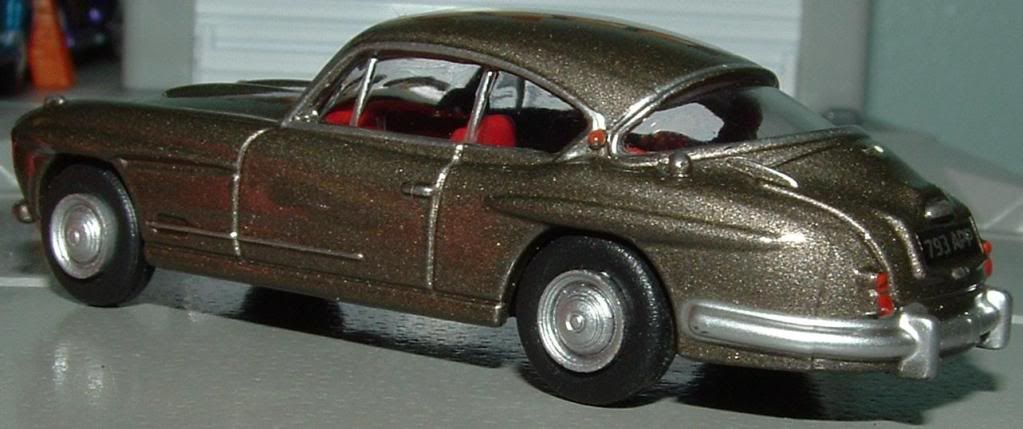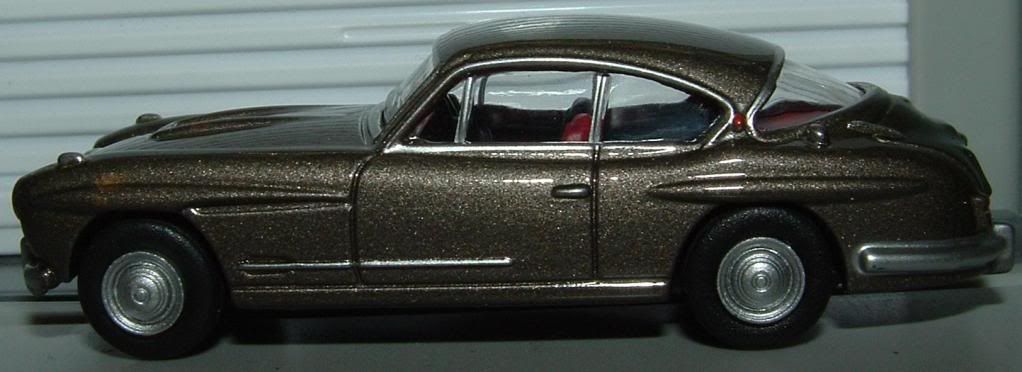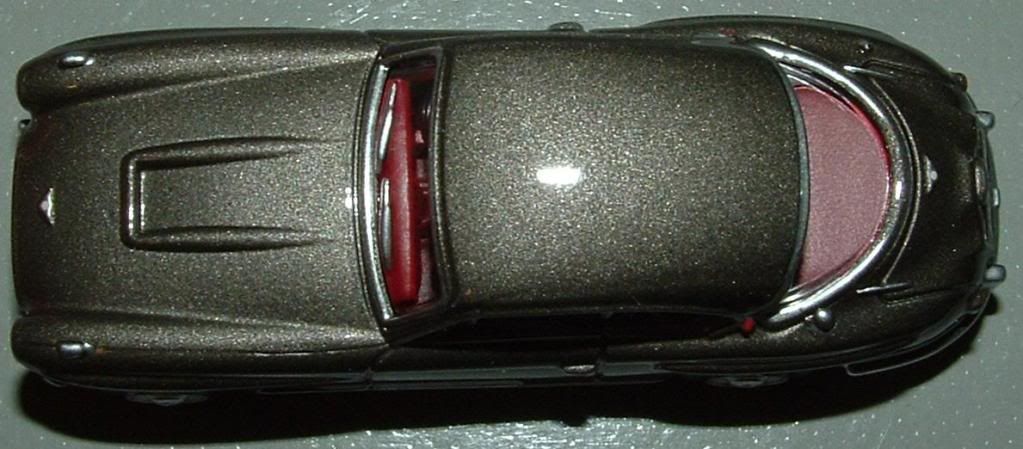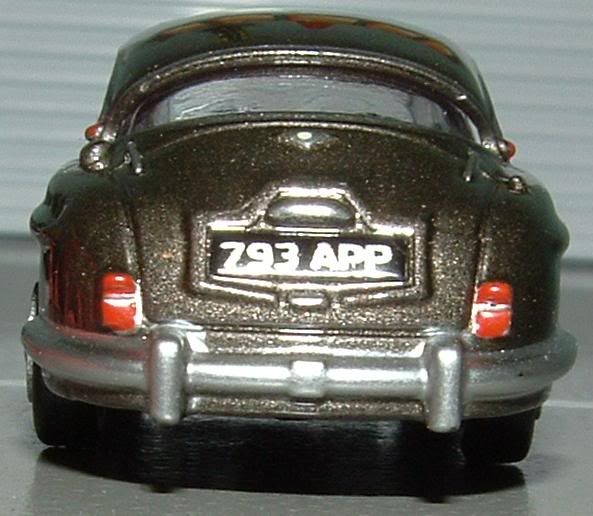
A blog focusing on 1/64 diecast from such popular brands as Hot Wheels, Matchbox, Johnny Lightning, M2 Machines, GreenLight, Tomica, Yat Ming, Majorette, MotorMax, Siku, Corgi, Guisval, Playart, Ertl, Zylmex, Racing Champions, & many more. Swifty's Garage features a daily Car Of The Day and news updates from your favorite brands!
Tuesday, November 15, 2011
Car Of The Day: November, 15, 2011
Today's car of the day is Oxford's 1957 Jensen 541R.
The Jensen 541 was first exhibited at the London Motor Show in October 1953: production started in 1954. In October 1954 a cabriolet version was introduced.
The 541 used fibreglass bodywork mounted on a steel chassis and was fitted with a six cylinder, three SU carburettor version of the 4 litre Austin engine and four speed transmission with optional Laycock de Normanville overdrive.
The body consisted of three major mouldings and the entire front was rear hinged and could be raised for engine access. The doors were aluminium. Suspension was independent at the front using coil springs with a Panhard rod located rigid axle and leaf springs at the rear. A choice of wire spoked or steel disc wheels with centre lock fitting was offered. At first the car had servo assisted 11 in (279 mm) drum brakes but from 1956, when the deluxe version was introduced, it featured Dunlop disc brakes both in front and rear - the first British four seater thus equipped.
It was also a luxurious car with the well equipped interior featuring leather seats as standard. The individual seats in front separated by a high transmission tunnel and the rear seats had a small centre armrest and could also be tilted forwards to increase luggage space. Standard colours (1955) were black, ivory, imperial crimson, moonbeam grey, Boticelli blue, deep green and Tampico beige.
By employing light weight materials, Jensen managed to make the car significantly lighter than their contemporary Interceptor model, with a dry weight of 1,220 kg (2,690 lb) as against the older design's 1,370 kg (3,020 lb). Performance benefitted.
In 1957 the 541 R was introduced, and in 1960 the 541 S arrived with wider bodywork and revised grill styling. Production of the Jensen 541 ended in 1959 and the 541 S early 1963 when the range was replaced by the C-V8.
For more information and pictures of the real car please visit: Jensen 541R
Here's a model that was completely unexpected in small scale. But that's what I love about Oxfords- the subject matter! What I hate is that they're 1/76 to fit on OO guage train layouts...
The Jensen 541R is a closed four-seater GT-class car built in the United Kingdom by Jensen between 1957 to 1960.
The original aluminium prototype appeared in 1953 as the 541 at the London Motor Show, although this changed to glassfibre for all production cars. Within a year, the new 541 had already earned rave reviews from magazines, notably Autocar, whose testers drove the grand tourer to a top speed of over 125 mph (200 km/h). It was the fastest four-seater the magazine had ever tested at the time.
The 541R employed a low-revving four-litre straight-six from the Austin Sheerline. The suspension system came from the Austin A70 with independent suspension by coil springs at the front and a live axle with half-elliptic springs at the rear. The 541R, introduced in 1957, differed from the 541 by using rack & pinion steering instead of a cam-and-roller system, and large disc brakes were used on all four wheels.
The car's styling was by Jensen's designer Eric Neale, and was not only considered attractive, but was aerodynamically efficient too; a Cd figure of only 0.39 was recorded, which became the lowest figure at Jensen. The body covered a chassis built by bracing 5-inch (12.7 cm) tubes with a mixture of steel pressings and cross-members to create a platform.
The 1957 model carried the DS7 version of the Austin Sheerline's four-litre motor equipped with twin carburetors on its right side. The cylinder head was reworked for the lifted compression ratio of 7.6:1 and a "long dwell". The engine had a raised output to 150 hp (112 kW) at 4100 rpm and 210 lb·ft (285 N·m). Only 53 cars were built with the engine.
In total Jensen built 193 541Rs before it was succeeded in 1961 by the Jensen 541S. This was similar to the 541R, but with a larger body and a GM-licensed Rolls-Royce hydramatic gearbox, and only 127 cars were built before the model was discontinued to be replaced by the CV8.
Subscribe to:
Post Comments (Atom)






No comments:
Post a Comment